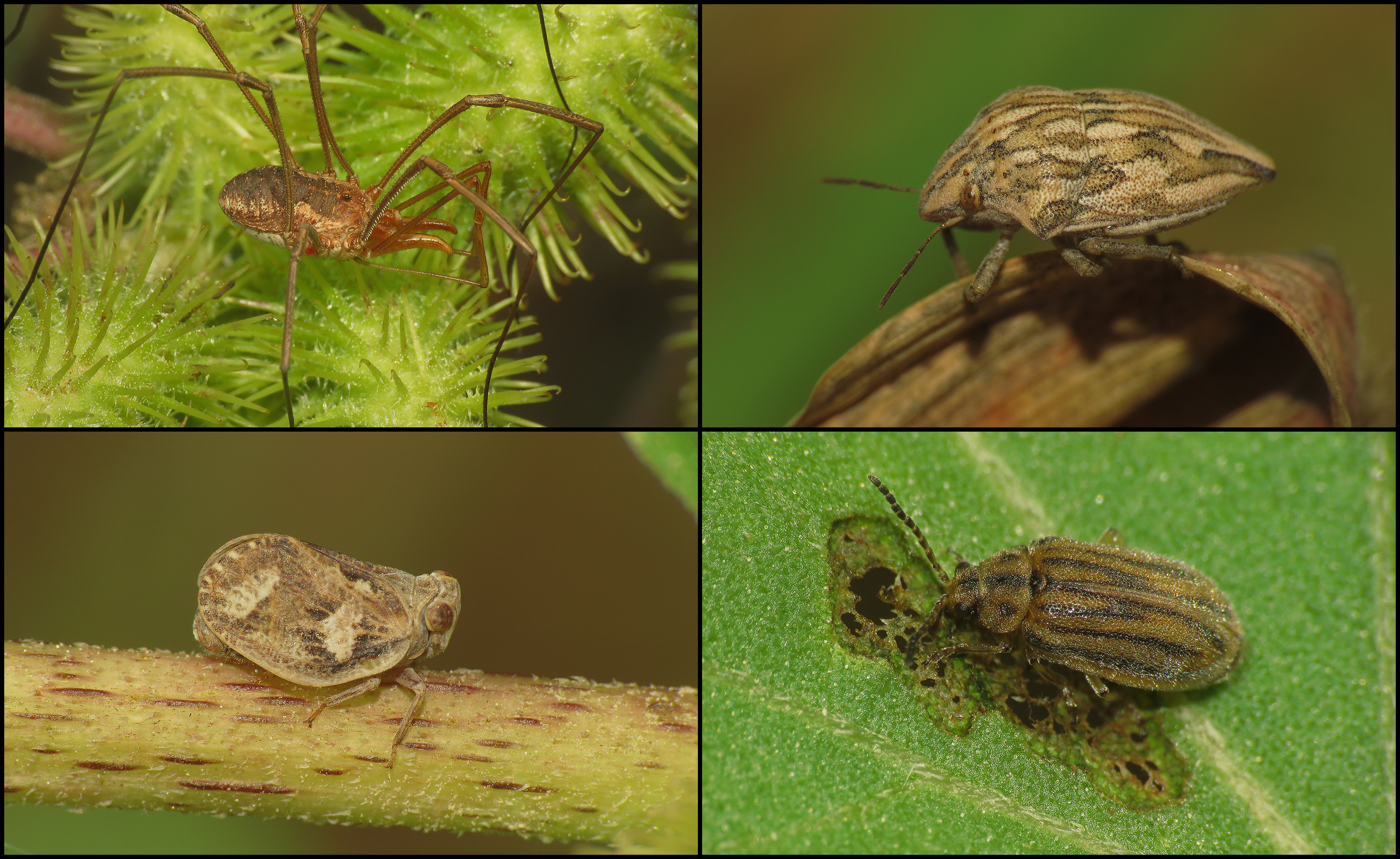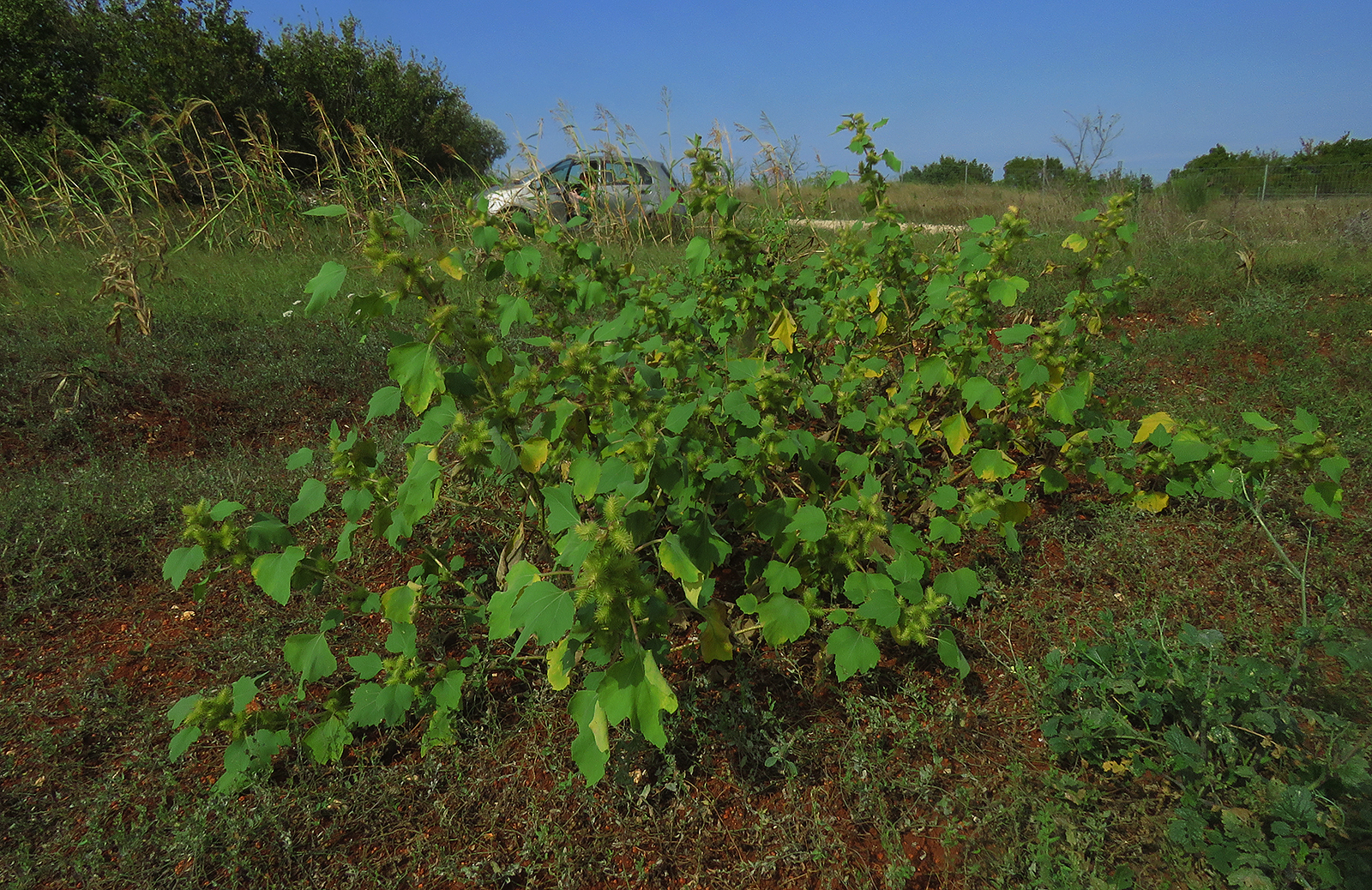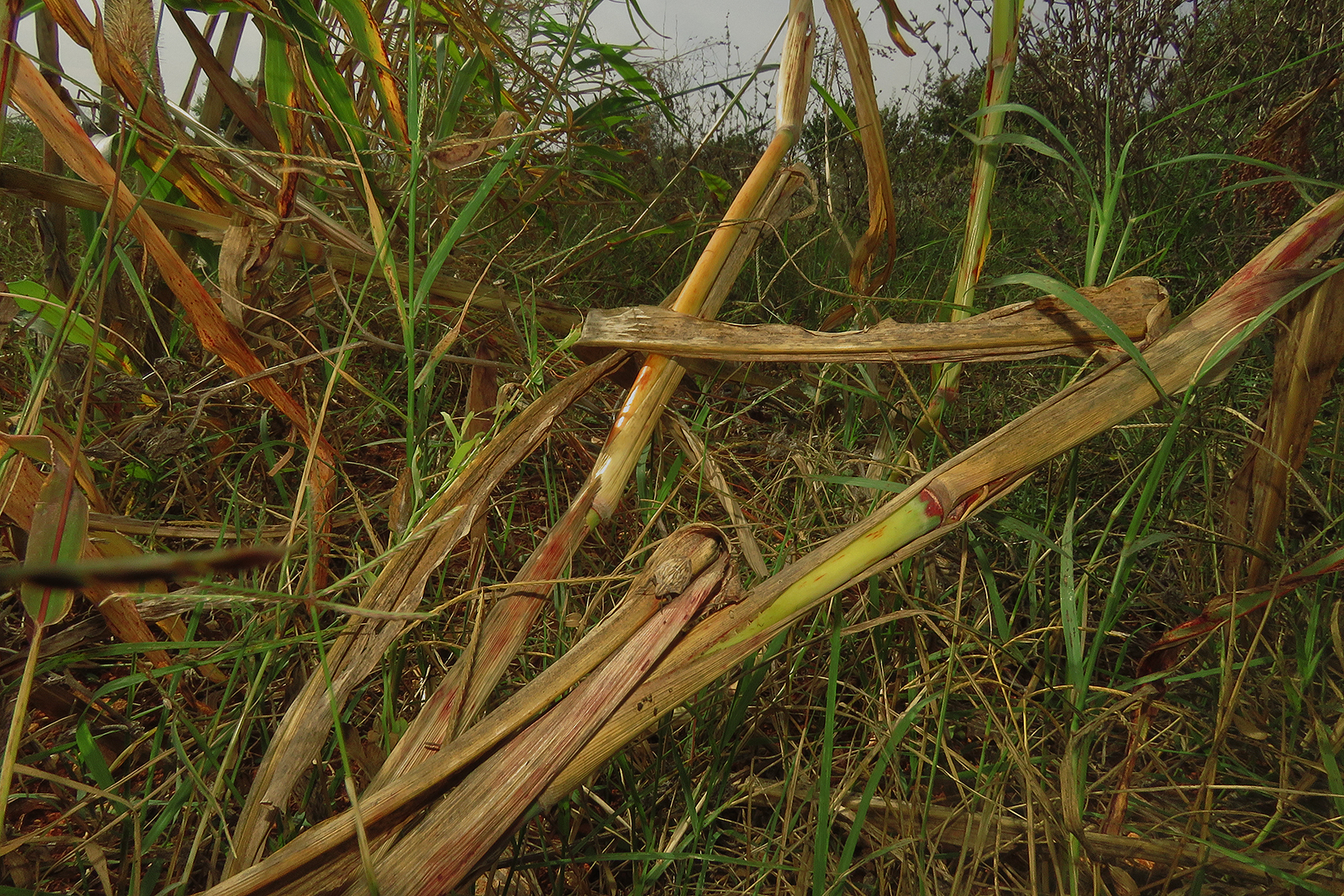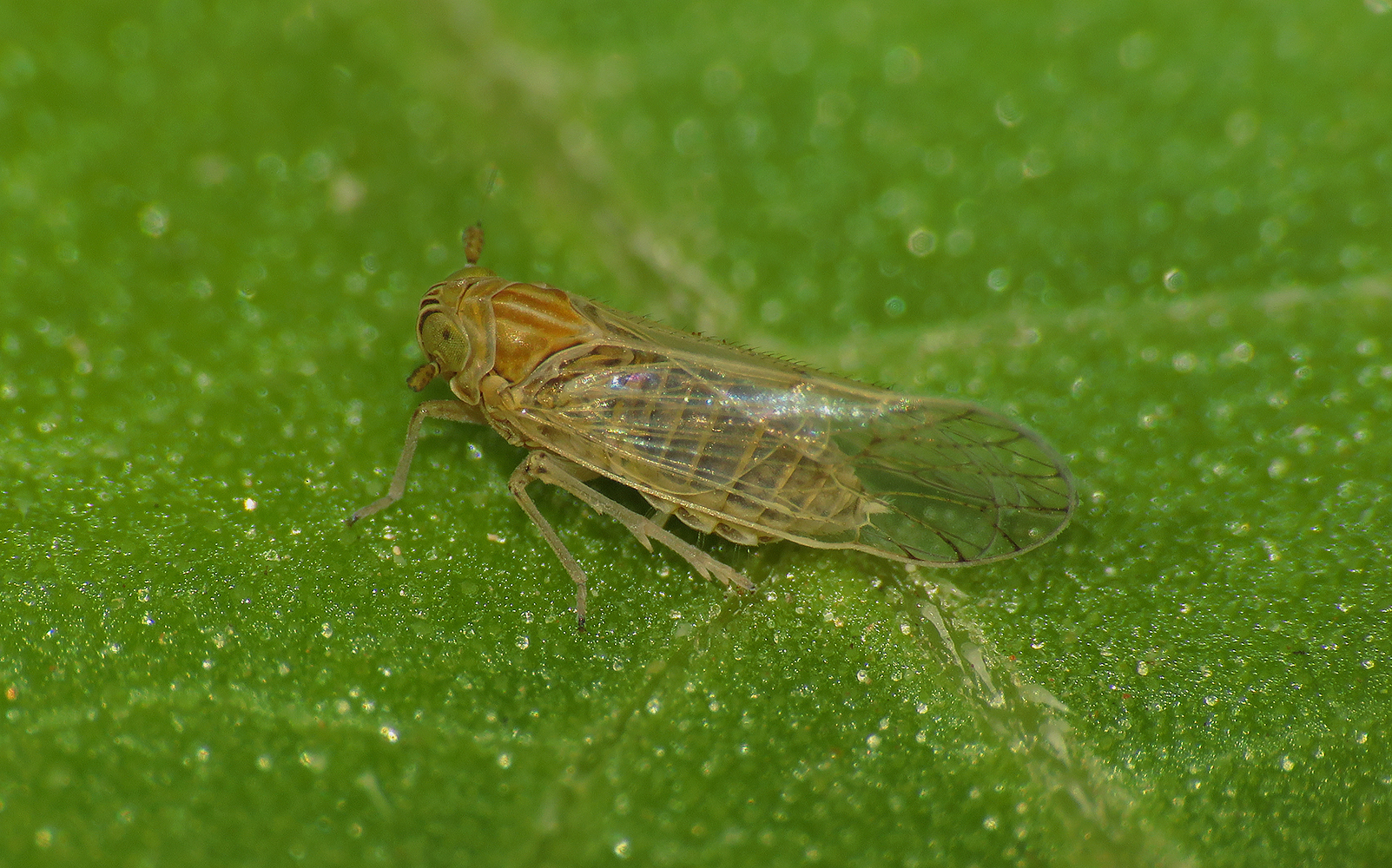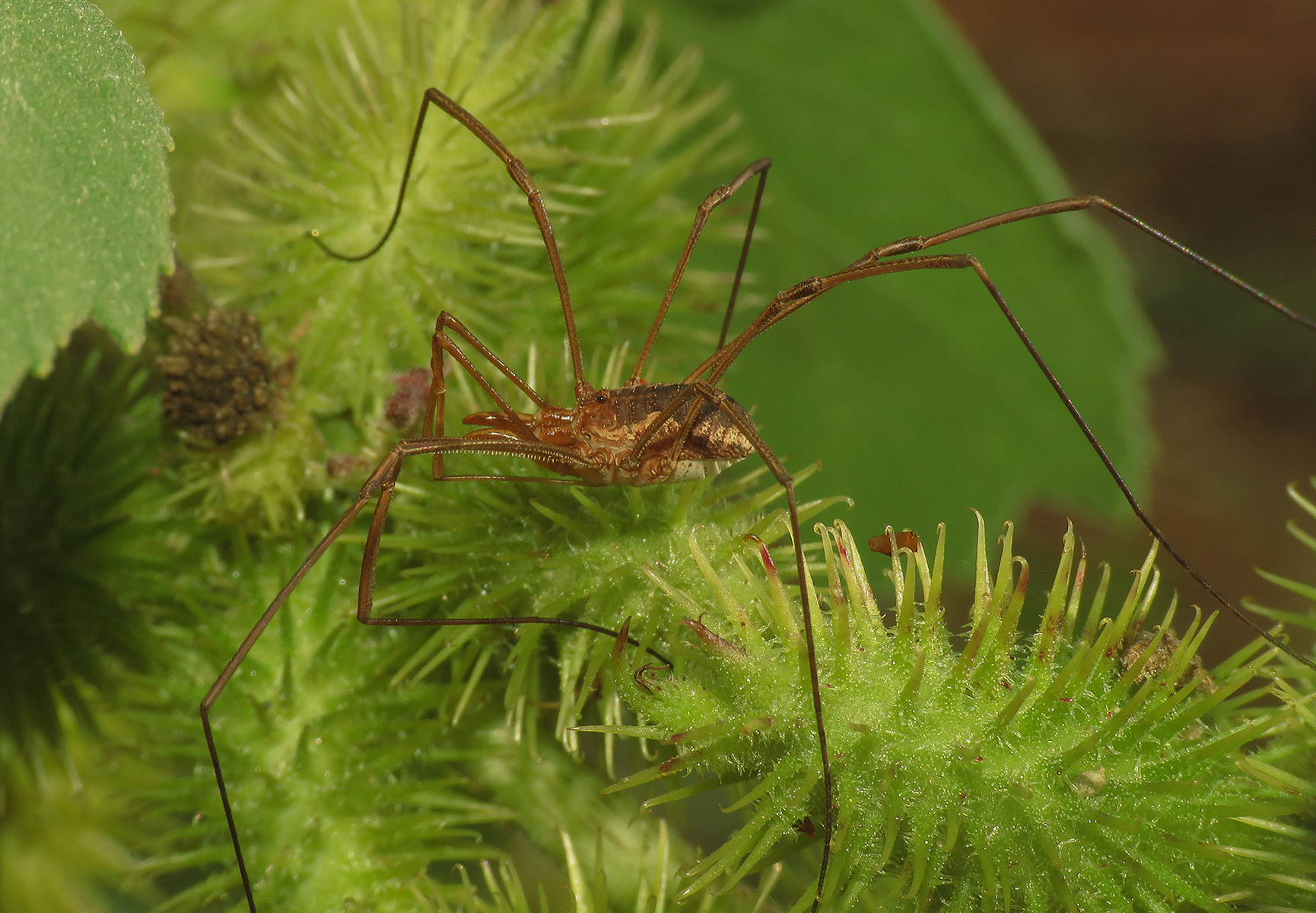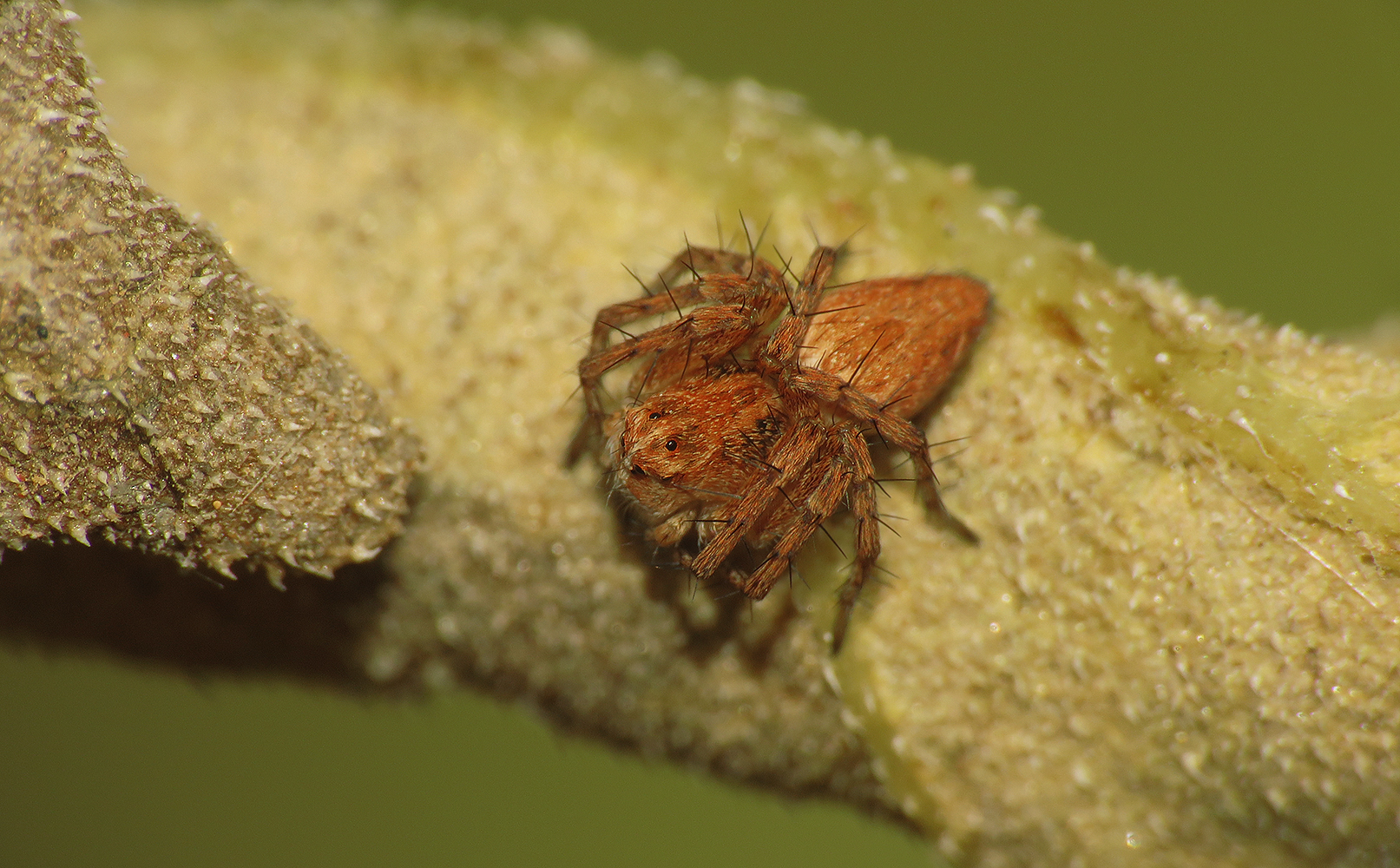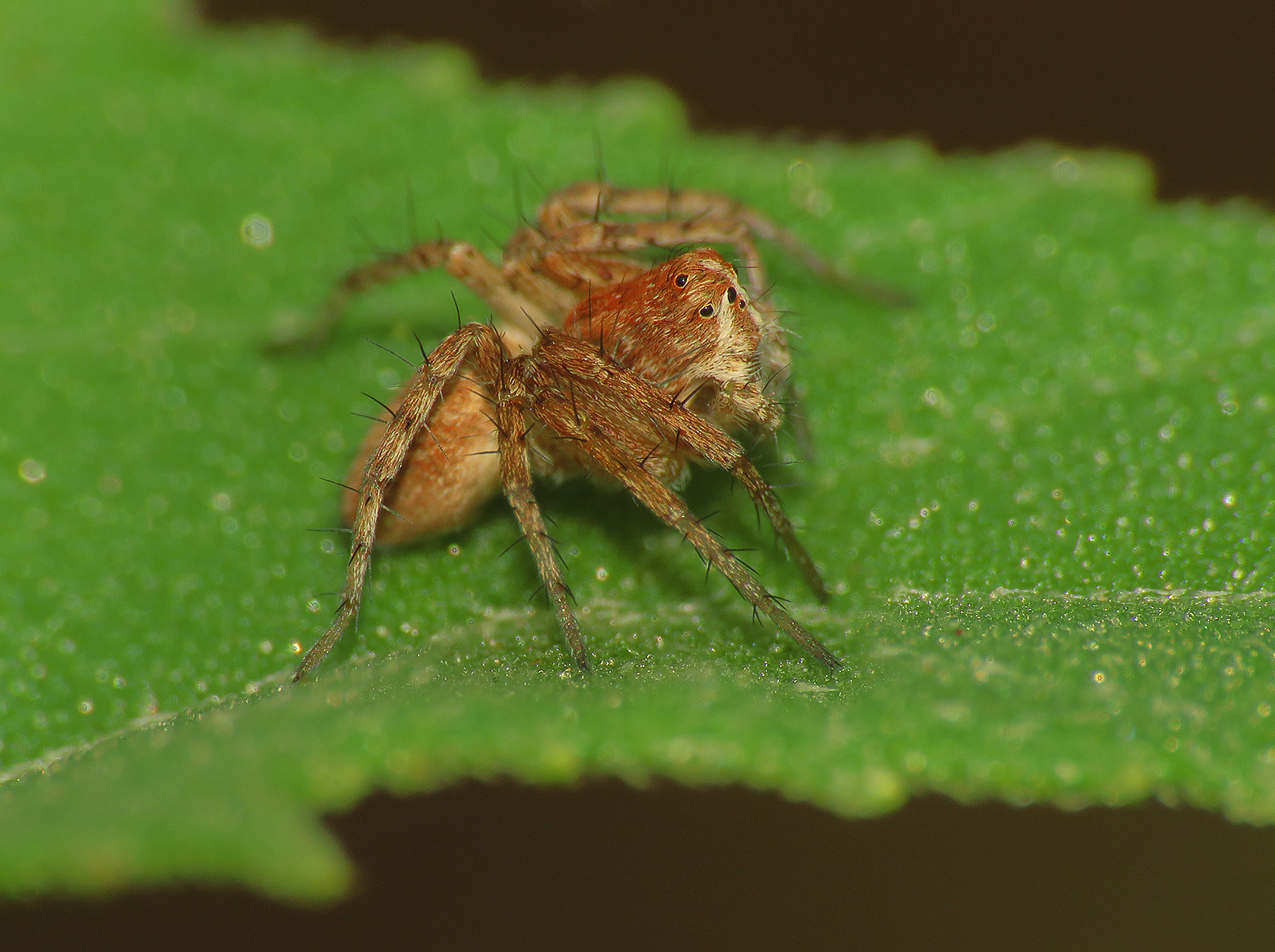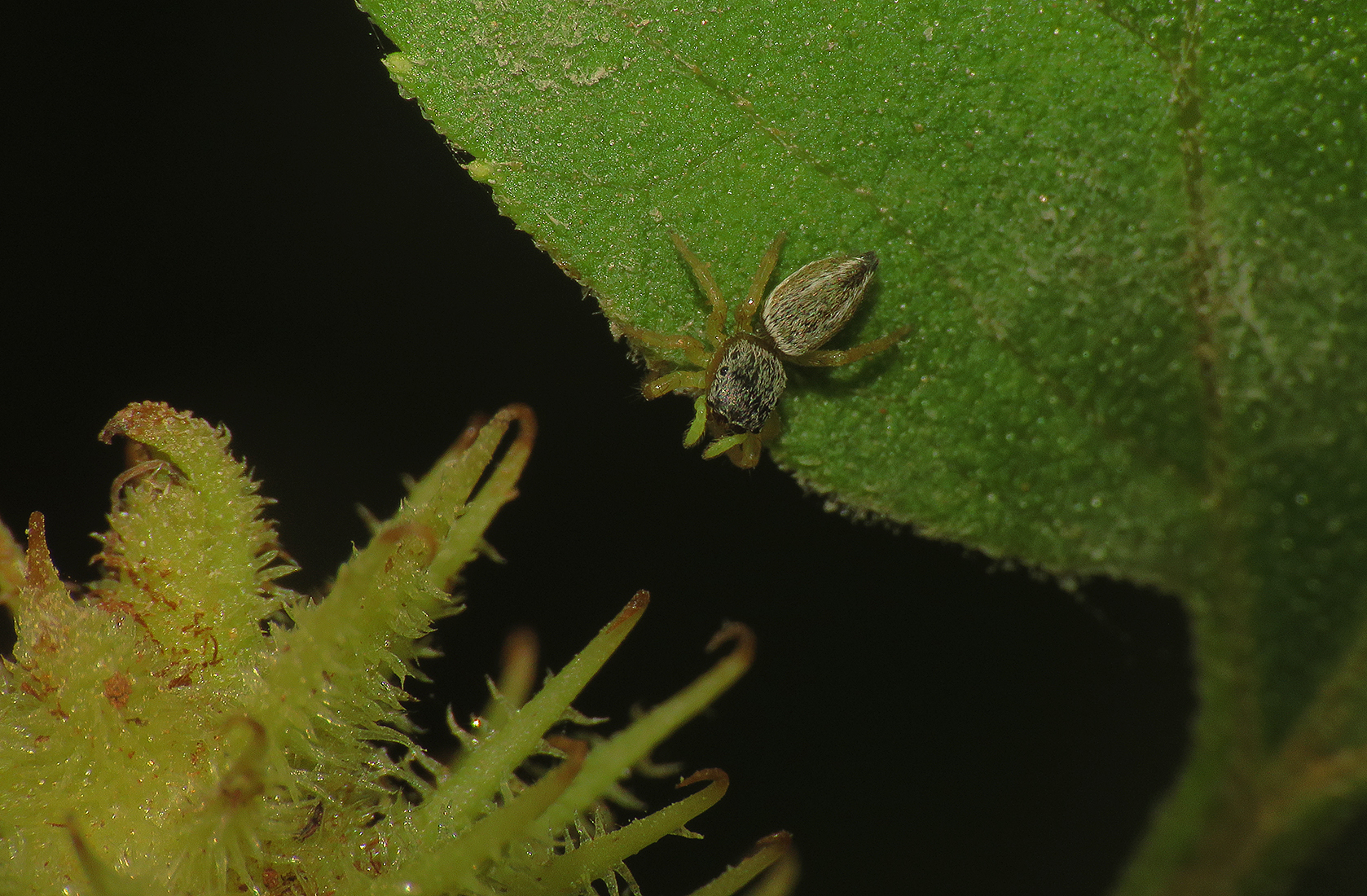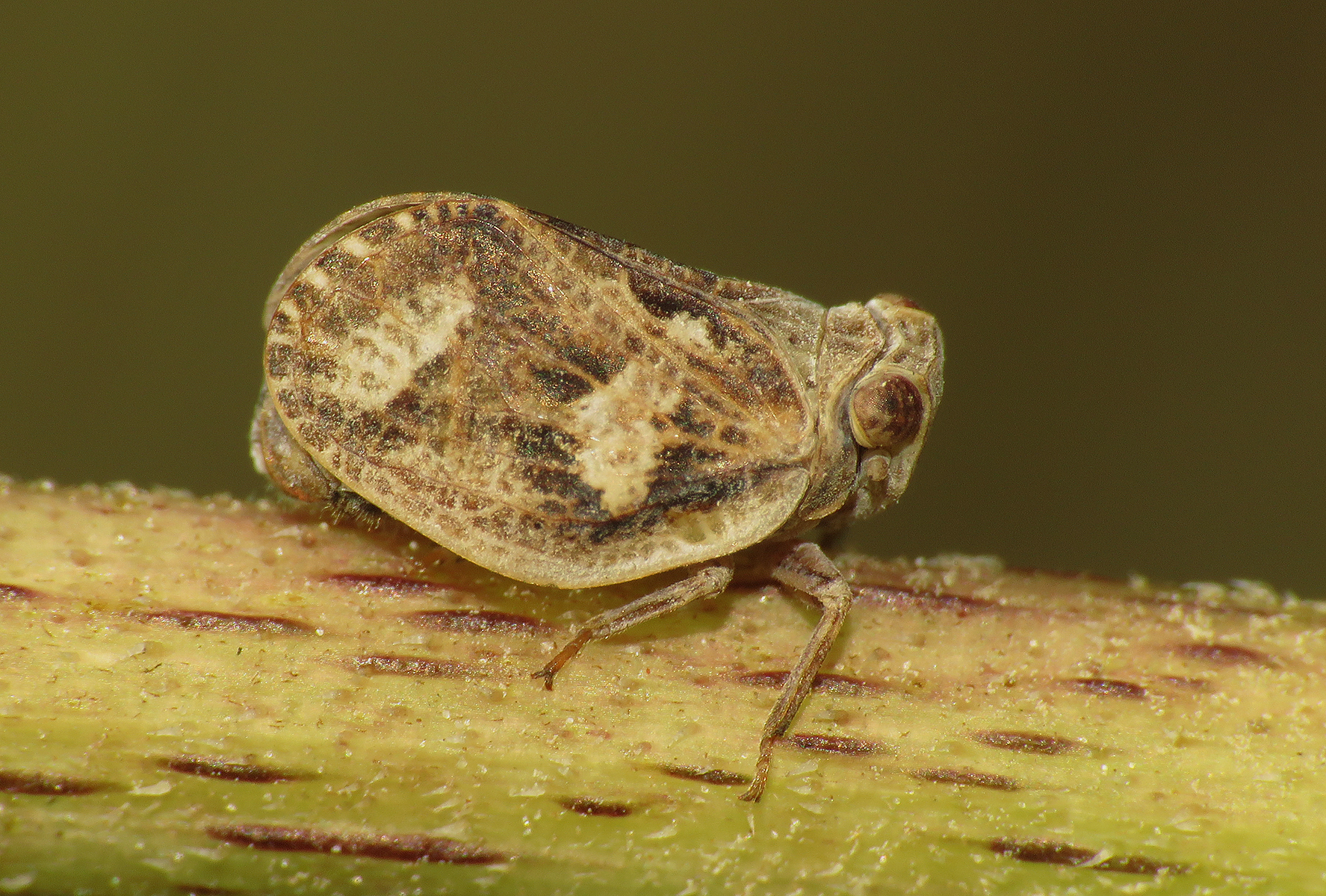On the second of October this year, I drove twenty-five kilometers north of where I live and parked my car by the side of a narrow unpaved road that leads through the fields and meadows outside the small town called Vodnjan.
The weather was bright & sunny, I found some interesting small arthropods to photograph, but since the wind was pretty strong that sunny Monday afternoon, getting a good, clear shot was quite challenging.
If you take a good look at all the details shown in the following photograph ...
... and enlarging the picture by clicking on it can help you do so, you'll notice that the reeds in the background are all bent in the same direction. That's the only visible sign of the wind you'll see in today's post, but believe me, it was blowing pretty strong.
Since I mentioned the reeds, maybe it's time to show you the insect I found on one of those plants on the edge of the field.
This is the Odontotarsus robustus ...
... a bug from the Scutelleridae family. In this set of six photographs, you can see the bug walking up & down the stem of the reed in search of a good shelter from the wind. In the following shot ...
... the bug has found a nice place in the folding of the dry, fibrous leaf of the same plant.
In this wide shot, you can see the intricate mix of the reeds and the grass on the edge of what once was a field covered with cultivated plants. The small bug is still visible in the center of the picture, especially if you enlarge the thing by clicking on it.
In the grass around the reeds, a juvenile Evarcha jucunda jumping spider has caught a winged ant. That's all I photographed on and around the reeds. All the rest ...

... was photographed on this plant - the Xanthium orientale. In the following photograph ...
... you can see a planthopper resting on one of its fairly large leaves.
Toya propinqua is the name of this species from the Delphacidae family. Planthoppers feed by pricing the tissue of the plant with their proboscis.

This beetle was chewing the juicy green tissue on the upper surface of another leaf. The leaves were constantly moving in the wind but that didn't bother the insects.

Their feet equipped with two tiny hooks were able to get a good hold on the plant.

When it comes to the name of the species, I can confidently tell you that this is the Ophraella communa, a leaf beetle from the Chrysomelidae family. I mean, all leaf beetles belong to that family.

This arachnid was resting among the fruits of the plant.
It's a harvestman. The name of the species is Phalangium opilio.
A bit later, on another Xanthium orientale, I found another Phalangium opilio. This one was resting on the upper surface of the leaf.

Before continuing with spiders and insects, I would like you to take a quick break from the macro view by looking for at least ten seconds at this wide shot that shows the Xanthium orientale plant from a flying insect perspective. I decided also to use this break to say that Xanthium orientale is an invasive plant that came from North America.
This spider was resting on the upper surface of the fresh, green leaf. The plant in question is always the Xanthium orientale, of course. Half an hour later ...
... I found another spider of the same kind. This one was resting on the dry, folded leaf very low on the plant.
The name of the species is Oxyopes ramosus.
The family is Oxyopidae. These spiders are fast and agile ambush predators that don't use their silk to entangle the prey.

Here you can see a small jumping spider that has caught a bug from the genus Lygus of the Miridae family. When it comes to the spider, I'm not sure what species this is. It could be another juvenile Evarcha jucunda. Evarcha jucunda is a species introduced a bit earlier, near the beginning of this post. The jumping spider, shown in the following photograph ...
... is the Heliophanus equester. This time I'm sure about the species. The family is Salticidae, of course.
And now, at the end of today's post, I decided to show you an insect that was walking back & forth on one of the branches of the Xanthium orientale. It's a planthopper from the Issidae family.
The name of the species is Agalmatium flavescens.
AND THAT'S IT. AS ALWAYS HERE ON HIVE, THE PHOTOGRAPHS ARE MY WORK.
The following links will take you to the sites with more information about some of the protagonists of this post. I found some stuff about them there.
https://uk.inaturalist.org/taxa/525777-Odontotarsus-robustus
https://en.wikipedia.org/wiki/Evarcha_jucunda
https://en.wikipedia.org/wiki/Xanthium_orientale
https://www.inaturalist.org/taxa/914828-Toya-propinqua
https://en.wikipedia.org/wiki/Ophraella_communa
https://en.wikipedia.org/wiki/Phalangium_opilio
https://en.wikipedia.org/wiki/Oxyopes
https://inaturalist.nz/taxa/796382-Heliophanus-equester
https://en.wikipedia.org/wiki/Agalmatium_flavescens
